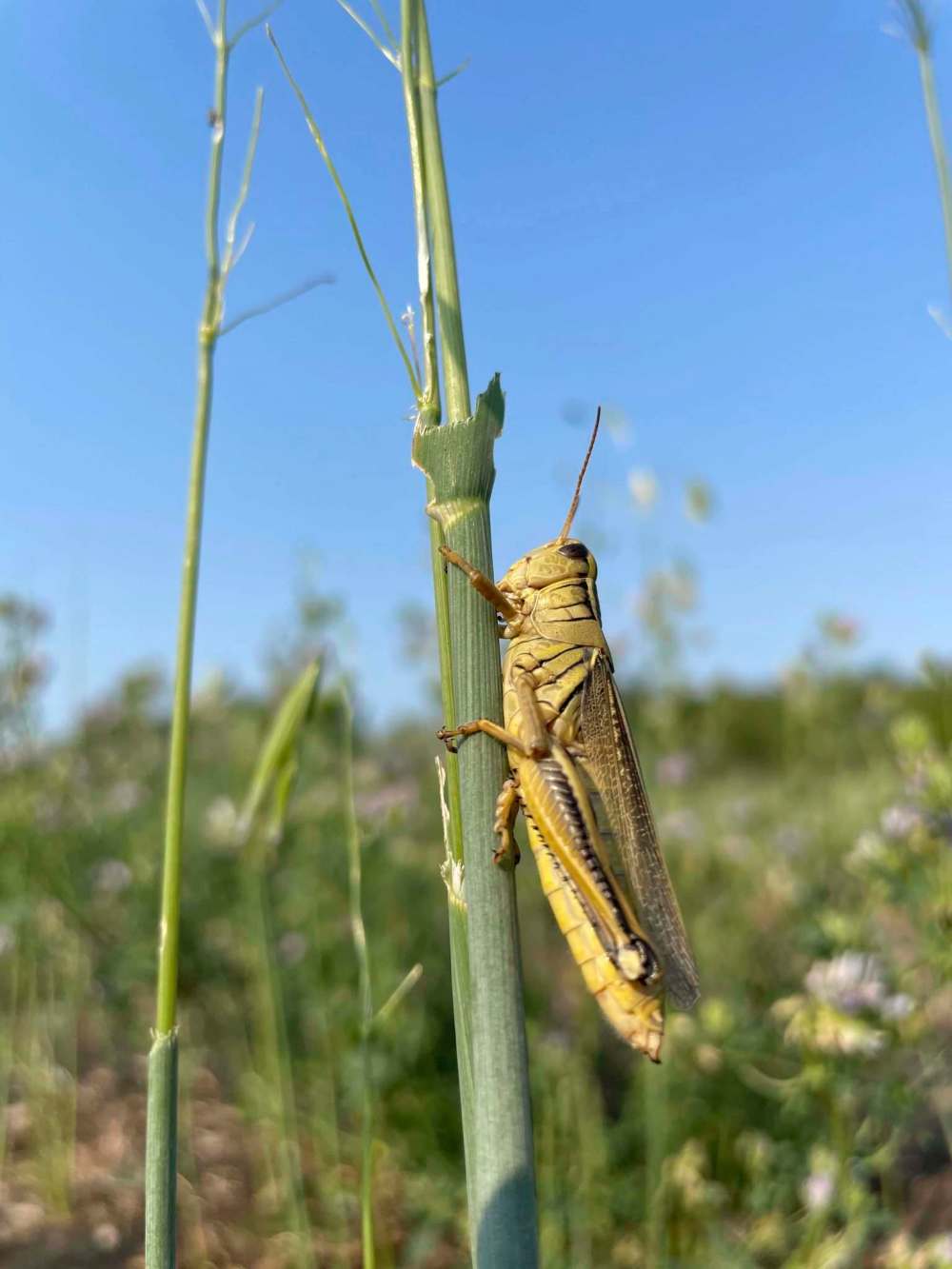Drought leaves farmers in dire straits
Advertisement
Read this article for free:
or
Already have an account? Log in here »
To continue reading, please subscribe:
Monthly Digital Subscription
$0 for the first 4 weeks*
- Enjoy unlimited reading on winnipegfreepress.com
- Read the E-Edition, our digital replica newspaper
- Access News Break, our award-winning app
- Play interactive puzzles
*No charge for 4 weeks then price increases to the regular rate of $19.00 plus GST every four weeks. Offer available to new and qualified returning subscribers only. Cancel any time.
Monthly Digital Subscription
$4.75/week*
- Enjoy unlimited reading on winnipegfreepress.com
- Read the E-Edition, our digital replica newspaper
- Access News Break, our award-winning app
- Play interactive puzzles
*Billed as $19 plus GST every four weeks. Cancel any time.
To continue reading, please subscribe:
Add Free Press access to your Brandon Sun subscription for only an additional
$1 for the first 4 weeks*
*Your next subscription payment will increase by $1.00 and you will be charged $16.99 plus GST for four weeks. After four weeks, your payment will increase to $23.99 plus GST every four weeks.
Read unlimited articles for free today:
or
Already have an account? Log in here »
Hey there, time traveller!
This article was published 04/08/2021 (1590 days ago), so information in it may no longer be current.
Drought and grasshoppers have all but destroyed Amy Nikkel’s fields of oats and hay.
“We cut down our oats, about three weeks ago, as green feed for the horses because they were getting eaten down by the grasshoppers,” she said. “It was very obvious there was going to be nothing left.”
As for the hay crop on the farm near Lundar, 120 kilometres northwest of Winnipeg, Nikkel said they should be able to harvest about 10 bushels. That’s down roughly 90 to 95 per cent.

Plagues of grasshoppers have flourished in the dry conditions as they seek out cereal grains and other grasses, gnawing the stalks and destroying yields.
While many farmers rely on crop insurance and other safety nets, Nikkel and her family had decided not to invest in insurance. Instead, they’ve stocked extra grain bins full of oats, which Nikkel said will get them through to next year.
But they have nothing to show after seeding and months of tending to the crops that were supposed to replenish their stock.
Nikkel is wary.
“As farmers, we need to be considering that climate change or climate chaos is likely going to be a trend,” she said.
If drought persists for years, it will spell disaster for many Manitoba farmers, particularly those in the Interlake region, such as Nikkel.
The province’s most recent crop report shows only five per cent of oats, spring wheat, barley and canola are rated “good to excellent.” Peas, the best-performing crop in the region (of those with sufficient data), have only a 25 per cent good-quality yield.
While the Interlake region has been particularly hard hit, with eastern Manitoba trailing closely, almost all crops around the province have suffered. Fifteen municipalities have declared an agricultural state of disaster.
Charles Fossay, vice-president of Manitoba Canola Growers, said the area around Starbuck has crop losses of 30 to 60 per cent, with the quality as poor to fair. There isn’t enough time for many of the grain crops to recover, he said. Without a significant rainfall soon, his soybean crop will likely be down about 75 per cent.
“But we need at least an inch of rain, if not more, to help these crops,” he said.
With drought and a deficit of crops, particularly hay, there’s another problem. Cattle farmers struggle to feed and water their livestock. Once again, the Interlake has taken the brunt of this shortage.
“If I had an endless supply of money, I could find something to feed my cows,” said Kirk Kiesman, a cattle farmer and manager at Ashern Auction Mart, a livestock auction house.
Kiesman said he and others in the area are scrambling to scrape up enough feed for their livestock and often have to either dig expensive wells or expand pastures to reach new water sources as reliable sources dry out.

However, many farmers are forced into even more desperate measures. Kiesman held a cattle auction on July 7 and 21 and will have another today. In normal years, farmers auction off cattle just once a year, in the fall.
In order to reduce costs, or because they can’t afford to feed livestock, farmers are selling their animals — sometimes half, sometimes 75 per cent, sometimes the whole herd, said Kiesman.
Farmers spend about $800 per cow in a season, he said, so with typical herds of 150 to 200 cows, the cost adds up. That’s why offloading livestock is sometimes the only option.
Kiesman said he’s worried this will begin to discourage cattle farmers, who may be forced to seek other work and move from an area his family has lived in for more than 100 years.
“Agriculture in the rural communities are the backbone of (rural municipalities). If all of a sudden they have to leave or move on to new jobs, then what do you do about the hospitals out here and the schools out here?” said the father of four children.
Manitoba Beef Producers president Tyler Fulton said he expects to lose cattle farmers this year, not only in the Interlake, but in various regions around the province.
“I’ve spoken with several who really don’t know how they’re going to recover,” said Fulton.
Fulton said the stress is wearing on many cattle farmers, a sentiment echoed by several grain and vegetable producers across Manitoba. One small vegetable and livestock farmer even refused to speak about it, citing stress and adding, “This year is real bad, and I’m kind of tired of talking about it.”
cody.sellar@freepress.mb.ca
History
Updated on Wednesday, August 4, 2021 6:20 AM CDT: Adds photos

